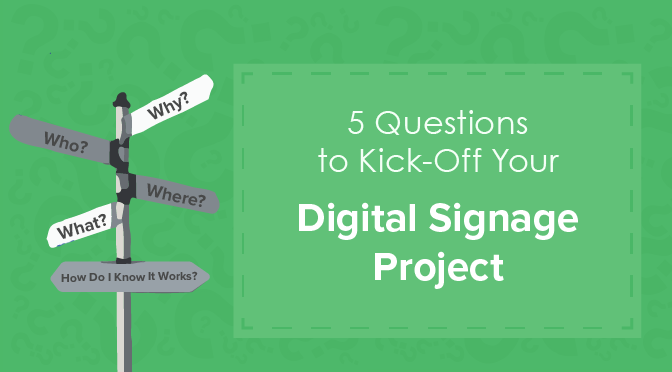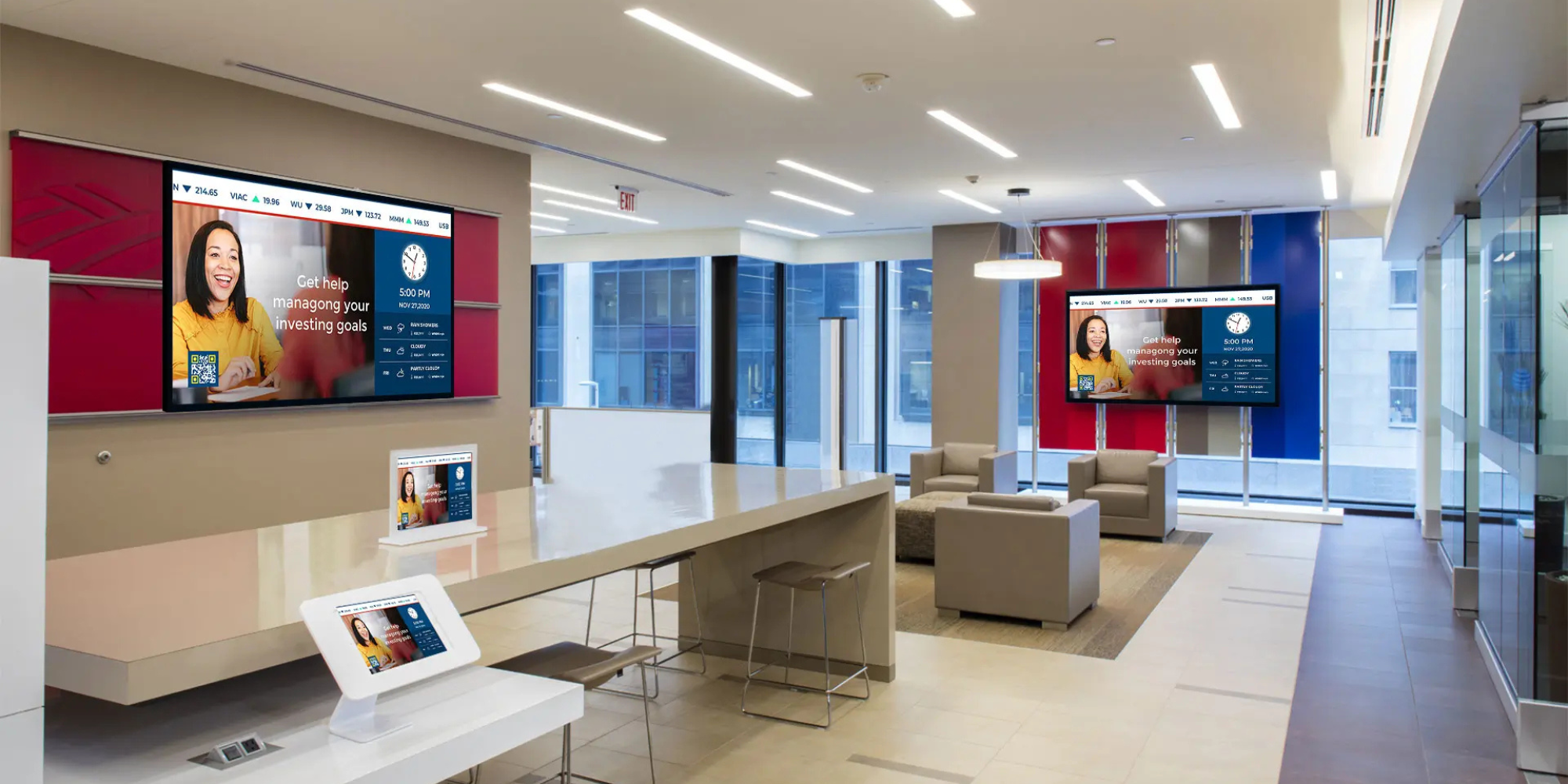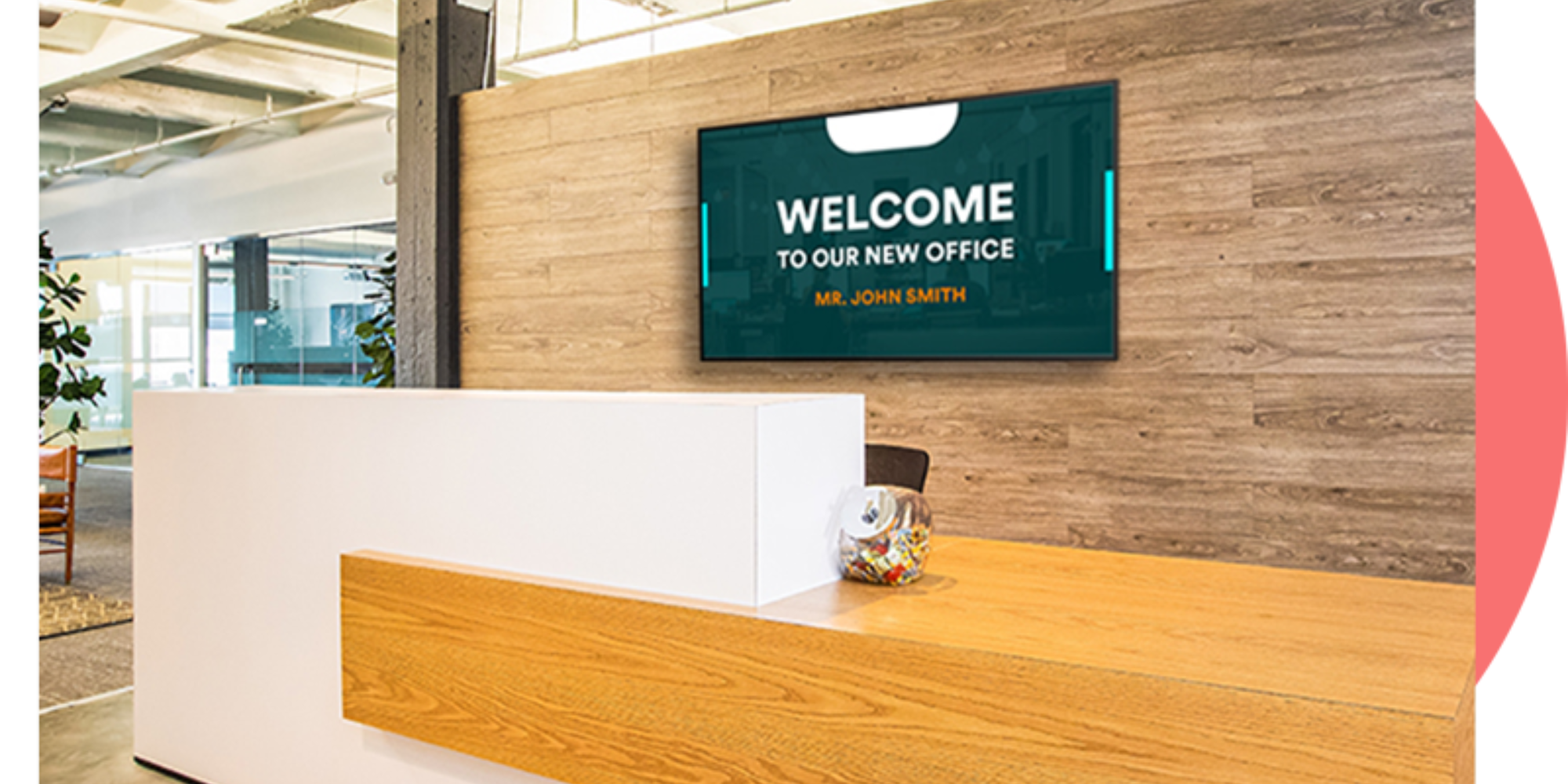
5 Questions to Ask When Starting A Digital Signage Project
I know what you're thinking...
A digital signage project… just a TV on a wall and some content...
Piece of cake...
But let me just stop you there.
To get your project off to a good start, you and all your stakeholders should have the following 5 questions asked and answered before an RFP is sent or a media player is purchased.
Why Digital Signage?
If your answer is: “Uh… I hear it’s all the rage for...”, I apologize but that’s not going to cut it. Instead you should really be thinking about what you want digital signage to accomplish for you. What is your goal?
At Rise Vision, whenever we think about goals, we think about our Job To Be Done- a framework that uses a customer's motivations for buying a product, as the job that product should fulfill.
So think about your digital signage, what are you hiring it to do? Is it to improve communication around your office? To increase sales? To create a Wall Street-like atmosphere in your finance lab and attract new students? Or to improve your household communication and organization with a display in your home? From one display to one thousand displays, every project needs an objective.
Ask yourself this very simple question, and make sure you are set straight on the goal before you move on to any of the following questions.
Who?
There are two “Who’s?” to this question. “Who is your audience?” and “Who is responsible?”.
1. Who Is Your Audience?
Before you start anything, you need to ask who you are creating signage for. Knowing and understanding your target is often where good digital signage projects shine. Your audience will dictate the display you are using and the content you chose to share.
Take the time to discuss your audience with all invested parties, and take the notes to write-up a simple User Persona. Your Persona doesn’t need to be a four-page write-up, but it should address their interests and motivations so that you can appeal to those in your implementation.
2. Who Is Responsible?
The second question is often left out in preliminary discussions, but it should be addressed right off the bat.
Someone needs to take ownership of the project. Free digital signage content can be very easy to manage and maintain but someone needs to take on the responsibility. If not, you’ll be showing stale content from 2008 because no one feels they are responsible for maintaining it.
The project doesn’t need to be a one-man job. However, someone should own it so that they can then organize roles and have others share the responsibility of updating it. Just make sure there is someone in place who will organize what needs to be done and for when.
3. Where?
Placement is one of the most important considerations when it comes to planning a digital signage project.
This is your opportunity to grab a coffee and take a seat in your space. Look around and see where people stop, and how long they linger there for. Are they just in and out, or are people there for prolonged periods of time?
If you notice that people primarily just pass through on their way to somewhere else, then your content should cater to their experience- show fewer presentations, large images, big font sizes, limited text, and information people can easily consume when they are on the go.
If your audience is in your space for a longer period, include more content to maintain their interest, and show more informative content such as a YouTube channel, Web Page, or Calendar.
4. What?
To answer this question, you will need to make a plan of what of what you will need to execute on the project. This is an important question to ask when it comes to budgeting, so spec it out in as much detail as you can.
Ask yourself the following:
-
How many displays will I need?
-
What type of display will you need? Interactive, passive? TV from BestBuy, or a commercial display?
-
What type of content do I want to show? This will determine the Templates you will need.
-
Do you want to show the weather, an Instagram feed, the news, YouTube, or just images? This doesn’t have to be 100% accurate because your design will inevitably change but it’s something you should think about when planning your project.
-
5. How Do I Know It Works?
Okay, your plan is almost complete. But before you bring your shiny, detailed, plan to your boss you need to consider how you will validate this new endeavour.
How will you ensure that you’re hitting your goals and seeing a Return on Objective?
If you’re running a 50 display, interactive project, you can run analytics on your presentations and monitor their engagement, but for smaller projects you need to get creative. So be attentive and come up with some experiments.
You can keep a watchful eye over your displays and see if people are noticing it, but if you’re looking for more concrete results you can do the following:
-
Have an in-store deal only show up on your display. Have it say something like “10% off eggs, ask your cashier about it at checkout.” If you get many people asking about the deal, then they are noticing your display.
-
If you’re showing a building map in your lobby, get the receptionist to take note of how many people are still asking for directions.
-
If you’re showing birthdays and events around your office, watch to see if more birthdays are being mentioned around the office and if turnout improves at office-wide events.
If you run a few tests and find out that it’s not working, don’t worry, all is not lost. Iterate. Make small changes and test, test, test. Try different variations of content, experiment with bigger font sizes, larger images, less text. Use Lean practices to continuously improve your project as you go.
Even if you see positive results right off the bat, it doesn’t hurt to keep experimenting. Maybe you might try something that makes for even better results, or maybe it makes for worse, but at least you know what NOT to do.
Validating your project, and proving that it works is an important step. If you’ve started your project out small with hopes to expand, then you need to have concrete proof to show invested parties that it’s working. If more people believe that good results are coming from your initiative, you will receive more buy-in. This might come as more people willing to contribute content or more support from your management team.
The Importance of Planning Your Digital Signage Project
Every successful project starts with a plan. Take some time to consider your strategy and the resources you have available to you. If you can answer these 5 questions, chances are your project will flourish with the stamp of approval from all your stakeholders.
More From Our Blog
-

How Effective is Digital Signage?
Digital signs are revolutionizing. That's the short answer. But if you're trying to convince leadership to invest in screens for your school hallways, hospital waiting areas, or manufacturing floor,[…]
Read More -

10+ Office Welcome Sign Ideas
Getting a welcome sign on your office display shouldn't take all afternoon. Rise Vision makes it pretty straightforward: pick a template, swap in your logo, and push it to your screen. Done. The[…]
Read More -

Top Trends in Digital Signage Display Technology for 2025
Digital signage technology is evolving rapidly, with new innovations emerging every year. In this rapidly evolving landscape, businesses must adapt quickly to keep up with the latest advancements in[…]
Read More
Keep Your Displays Interesting – Pick New Templates Every Week!
Every week, we send template recommendations that will make you look great and improve your audience experience. And the best part, they save up to 16 hours of content creation time every week!
12,300+ Organizations Trust Rise Vision, You Can Too
Schedule a Free Demo
You deserve the #1 all-in-one platform for digital signage, screen sharing, and emergency alerts.




































